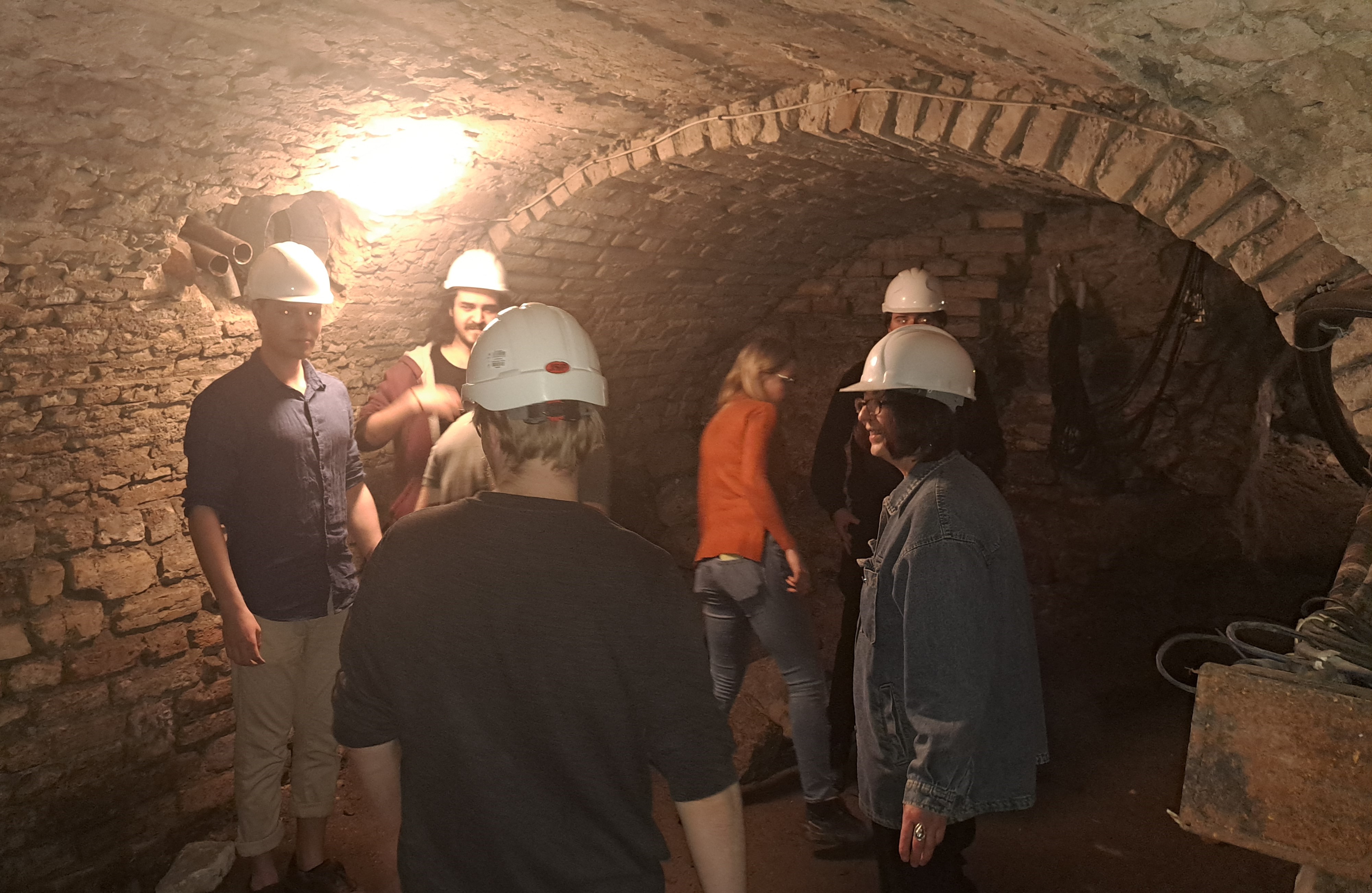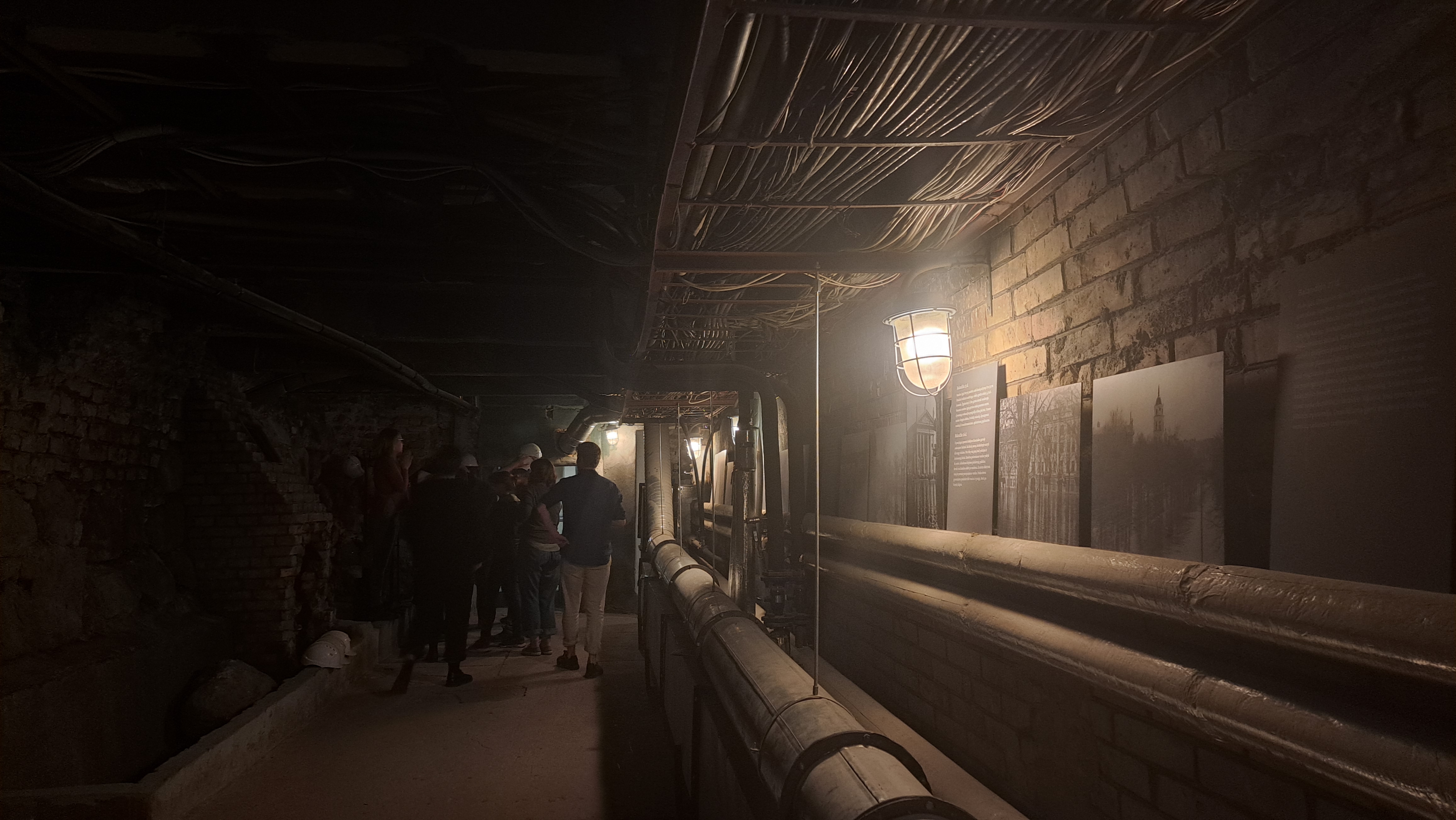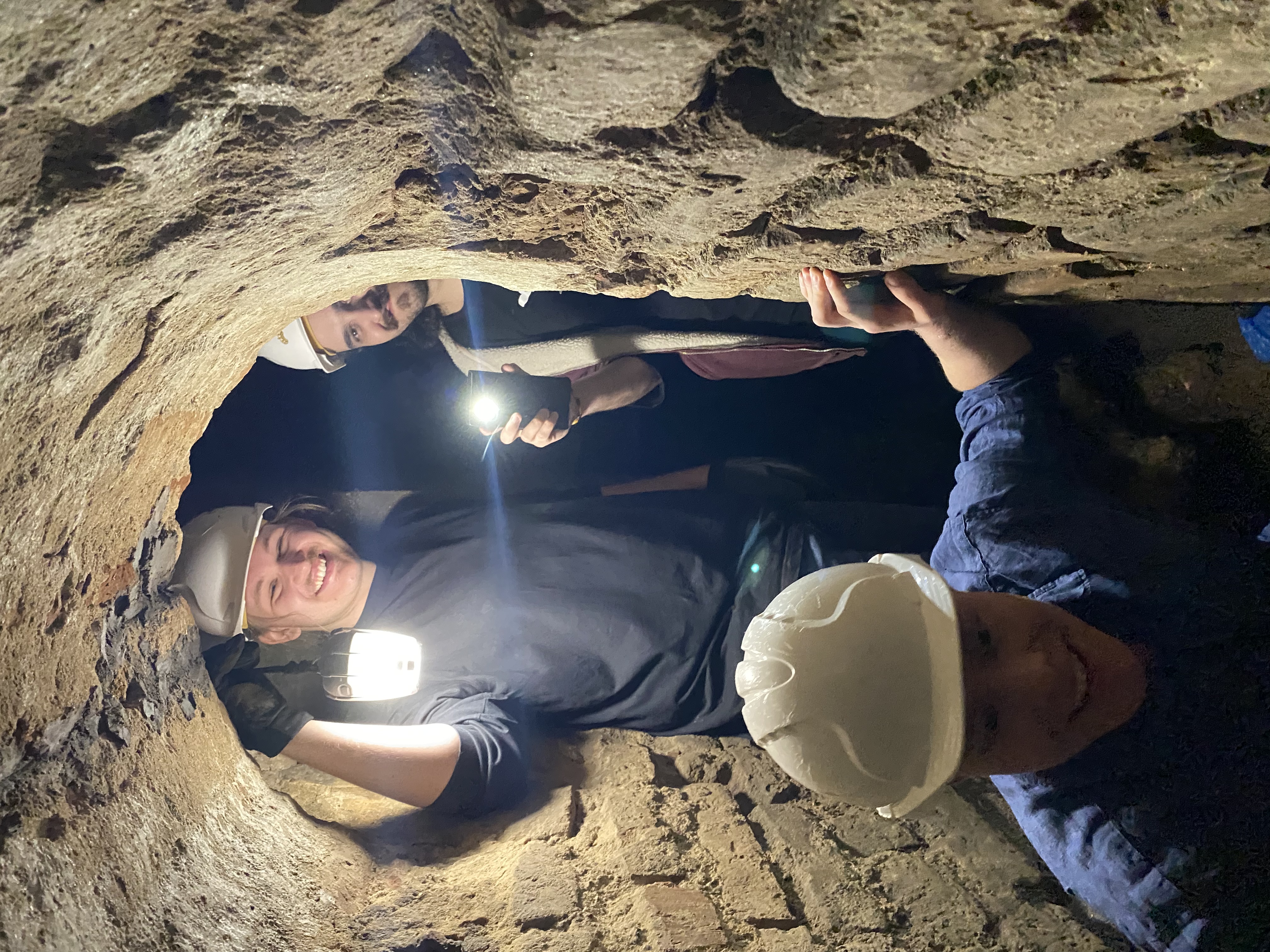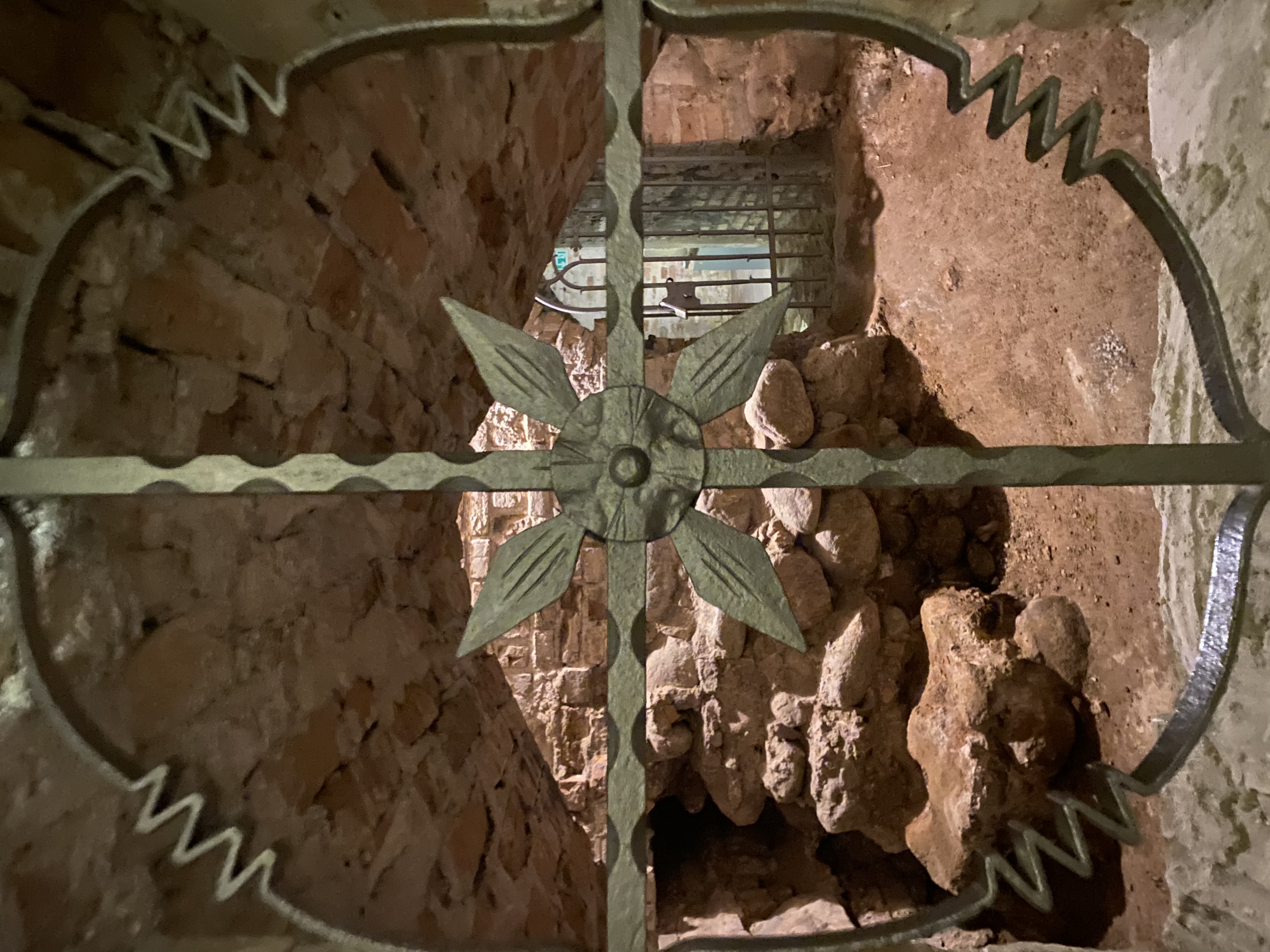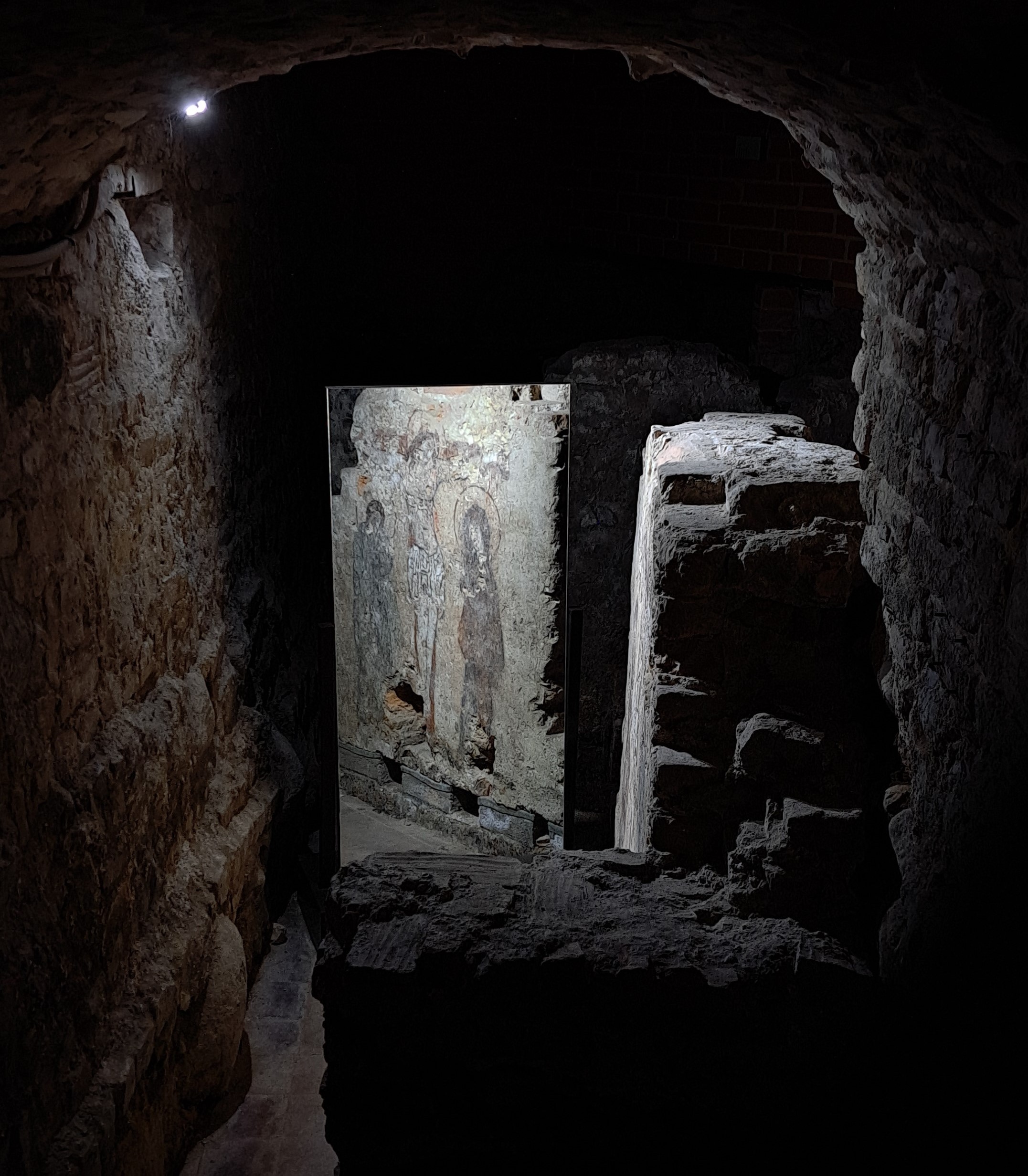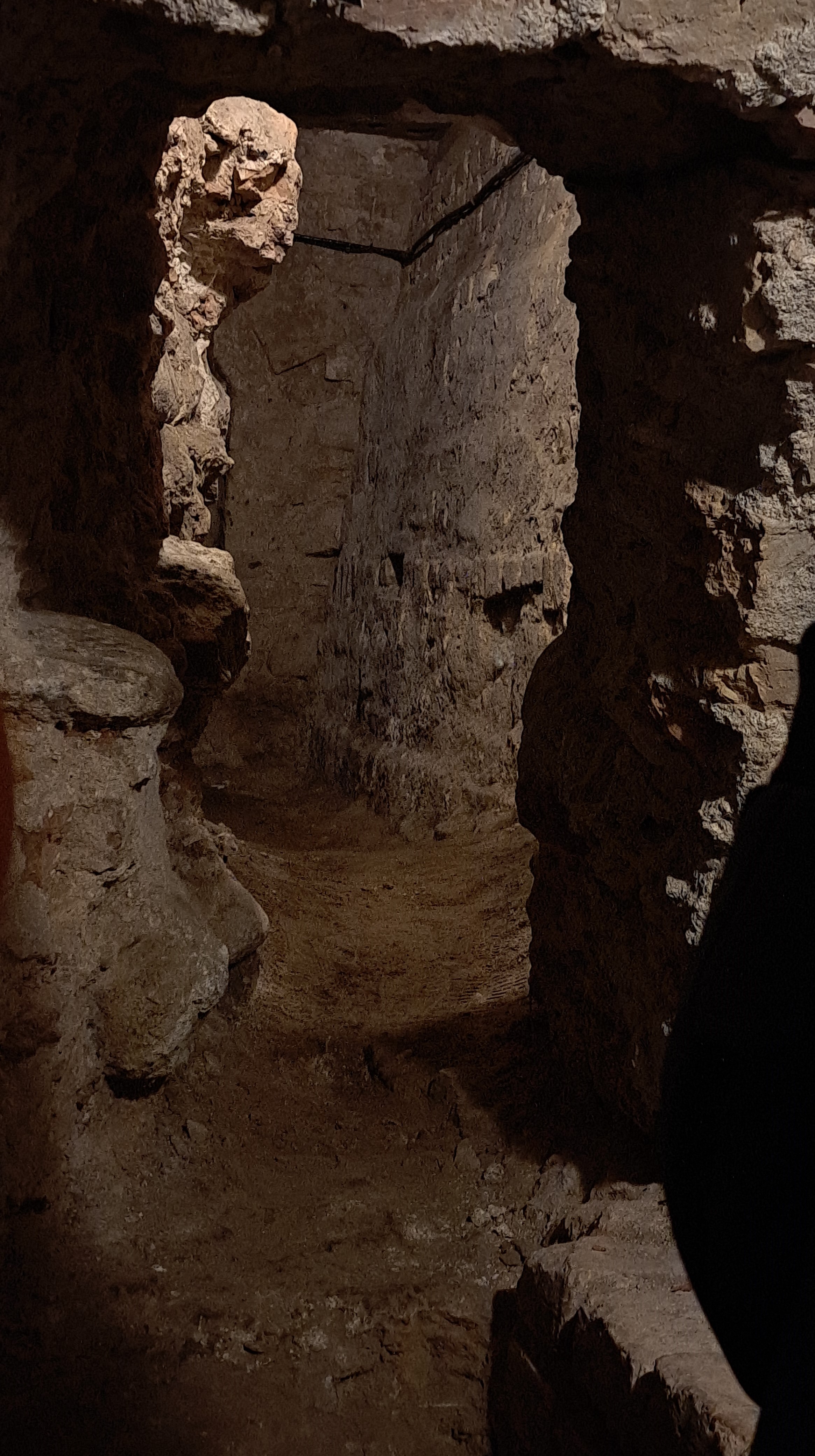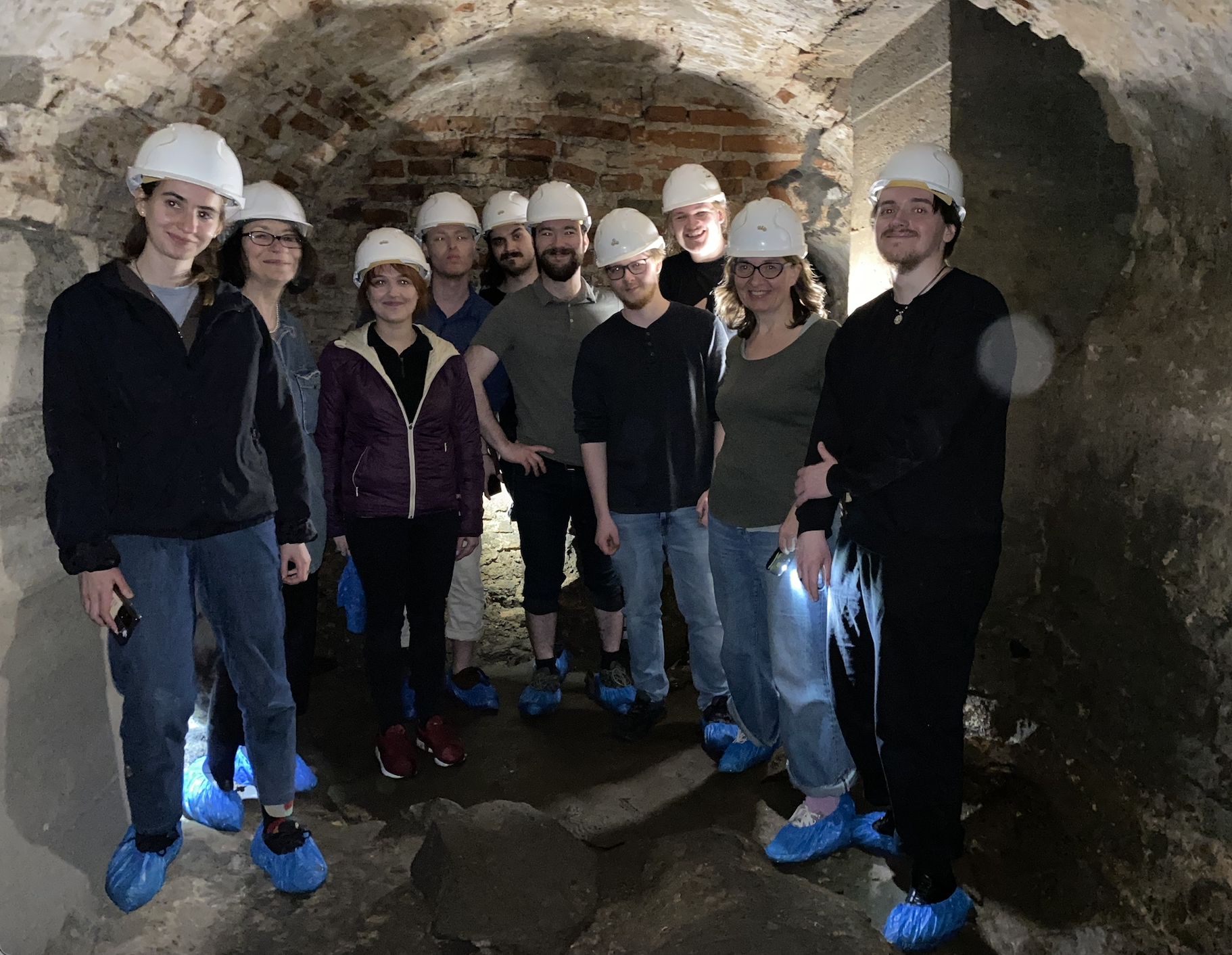
On Thursday, April 20th, a band of Philology Faculty students delved deep into the crypts of the Vilnius Cathedral. The crypt-delvers are enrolled in the course Reading the Anglo-Saxon epic Beowulf (lect. Rūta Šileikytė Zukienė) that focuses on studying the text in its authentic Old English.
The adventurous group found themselves several meters below the cathedral floor; pleasantly toured through the archaeological exhibits of the reconstructed past, the last resting places of high medieval nobility, and then bravely guided into the depths of the Cathedral’s darkened drainage system. Examination of the Cathedral’s underground illuminated the greater context and comparisons between the fiction and history of Beowulf and the cold stony reality of the brick-laden depths.
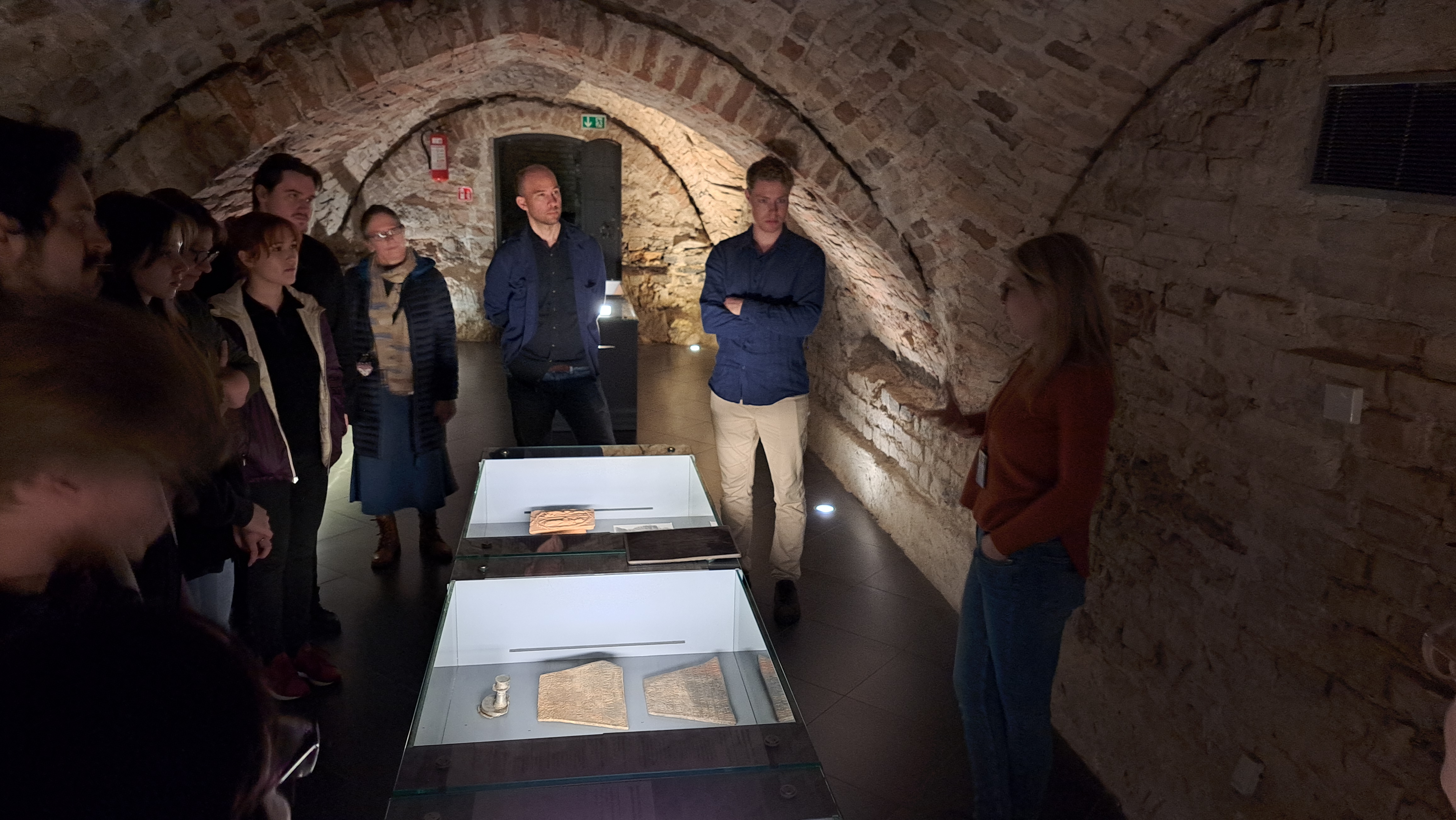
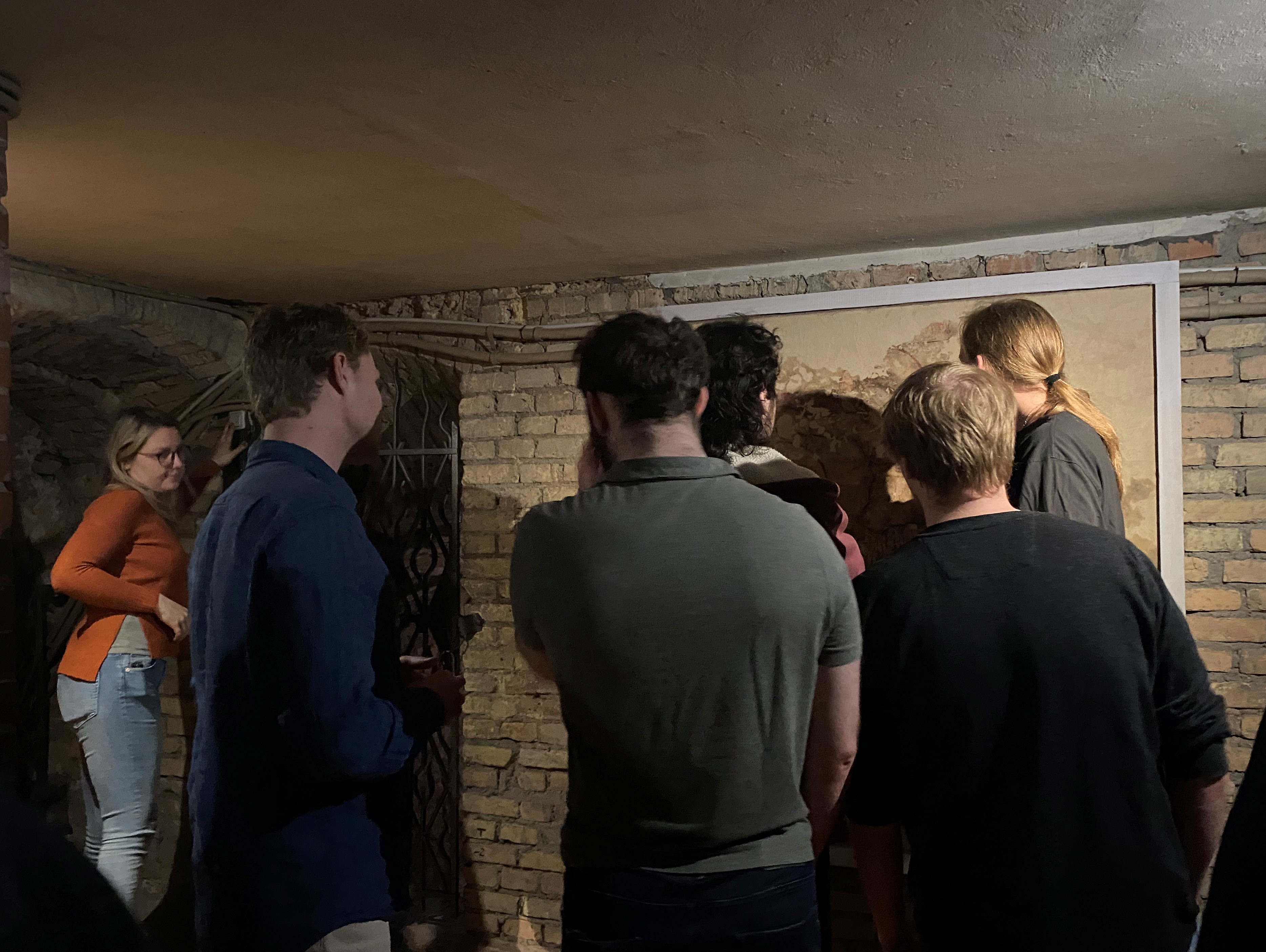
To provide some context, Old English is the early medieval form of English, and the language of the Anglo-Saxon inhabitants of England amidst the turbulence of the Viking Age. Beowulf takes place in 6th century Scandinavia, but its Old English form is a Christianized retelling of an epic long familiar to pagan Danish poets. As the earliest noble graves in the Cathedral’s crypt testify, religious conversion was synonymous with cultural conversion. An act which creeps slowly over time, as the practices and rituals of a beloved past are not easily forgotten despite new identities under new beliefs.

Beowulf recounts the adventures of a monster-slaying hero of royal stature. Thought to be indominable, and a bastion of poetic virtue, Beowulf himself existed in a transitioning world of religious identity. But the quality and greatness of his character surpassed Christian/Pagan dichotomies and revealed how bravery and excellence can be derived from both tradition and change. The Crypt exhibits a detailed history of transitioning faith and politics, while traditionally honoring the remains of the noble and faithful in the Royal Mausoleum under St. Casimir’s Chapel and the clerical Crypt of the Chapters. While Beowulf is a fictious work, brought out of Scandinavia to Anglo-Saxon England centuries prior to the Cathedral’s conception, such imperishable adoration and respect for shared tradition and societal change echoes both deep within the hallowed halls and the scripts of legend.
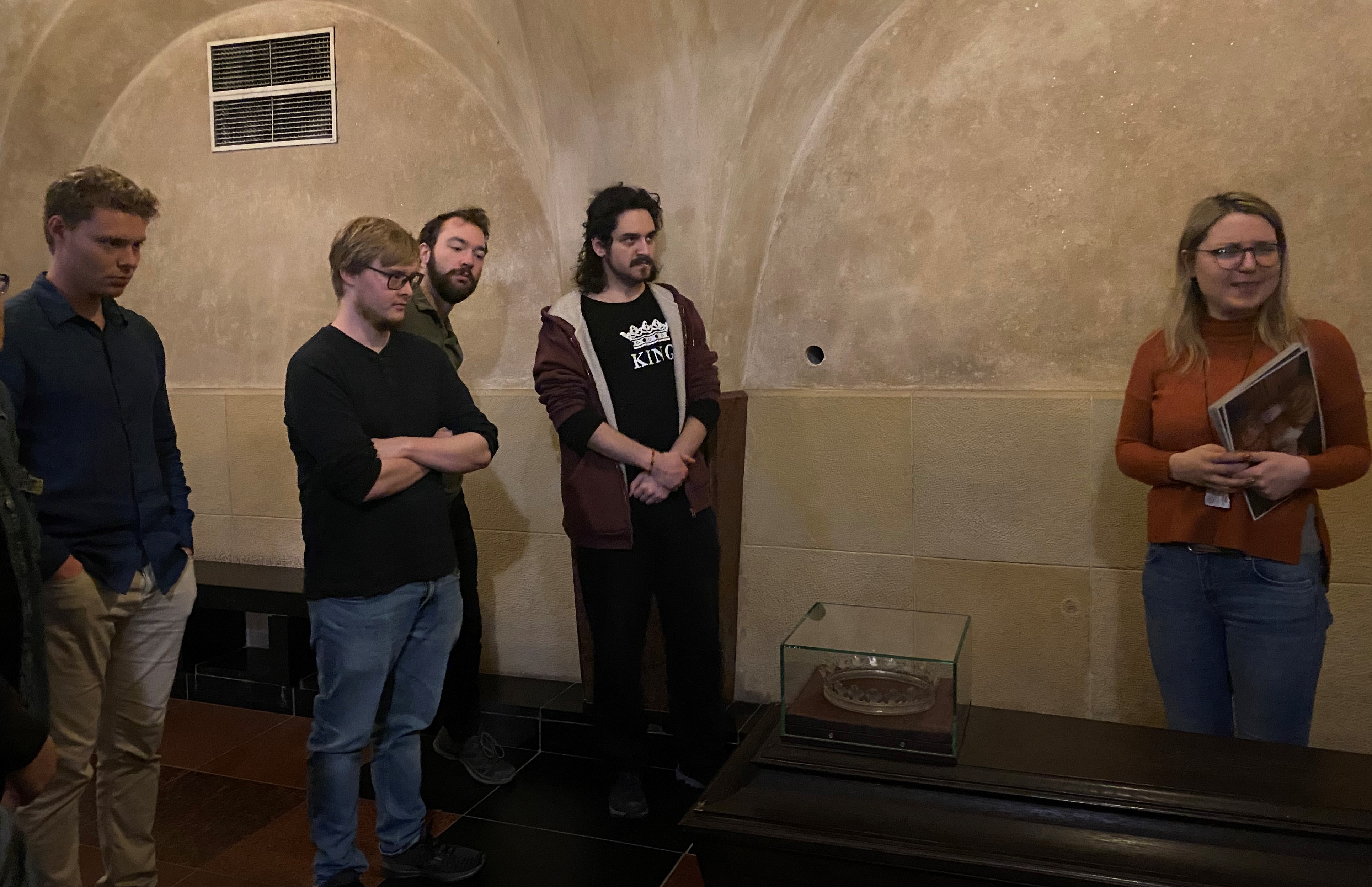
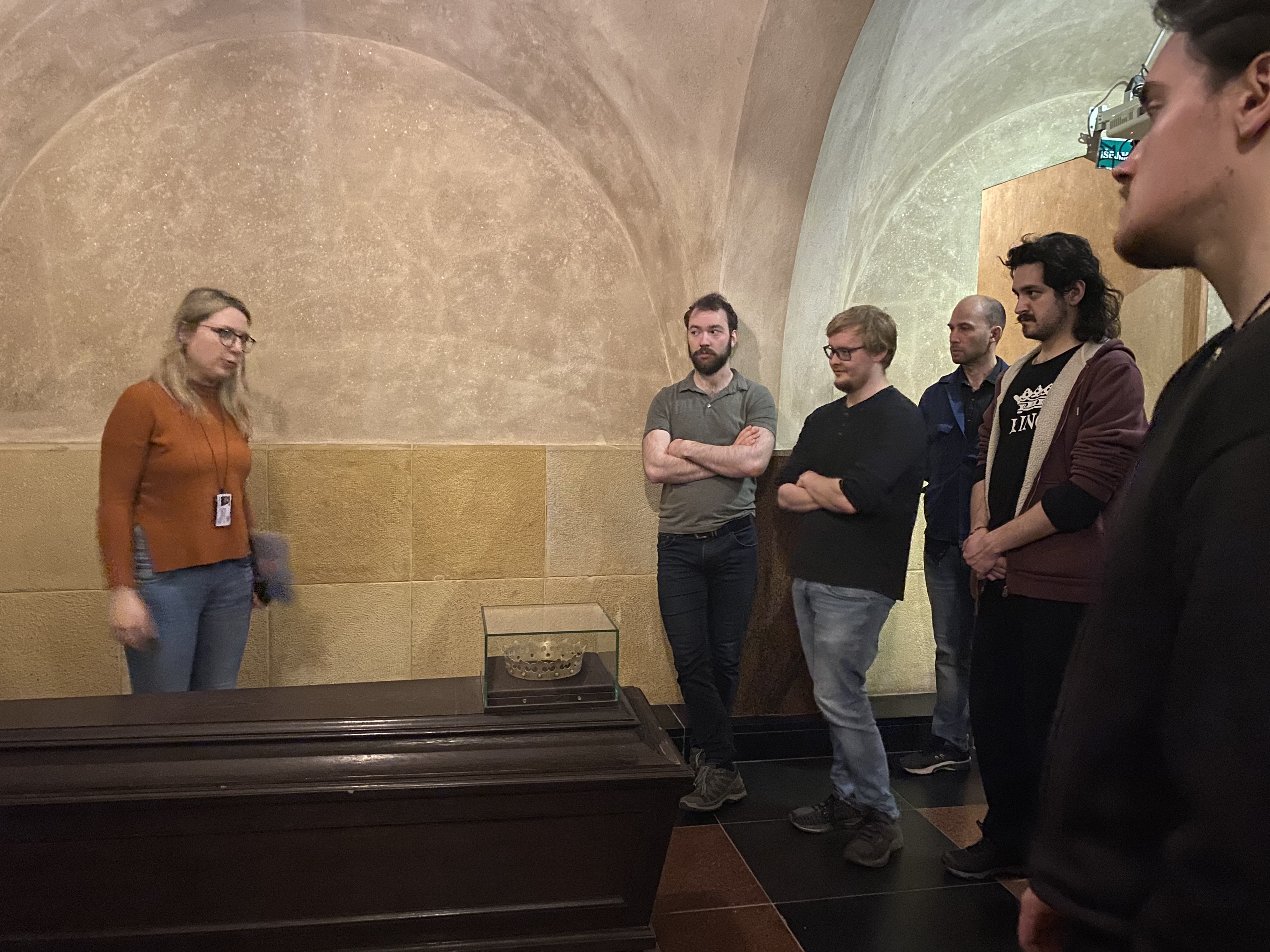
Along with their cherished Old English lecturer, the motely group of delvers hailed from different corners of the Earth. Lithuanian, Armenian, and American, Vilnius University students of the Scandinavian and English departments were accompanied by Erasmus students from both the Netherlands and the United States. The entire collective found themselves deep within the unlit heart of Vilnius, on an academic quest to understand more of this beautiful land and its incredible history. In grand respect for Beowulf and the entombed histories which lie beneath the Cathedral, the students, and their professor, continue their quest to further understand the majesty of this great wide world.
–– Ian Dotson, 23/04/2023
